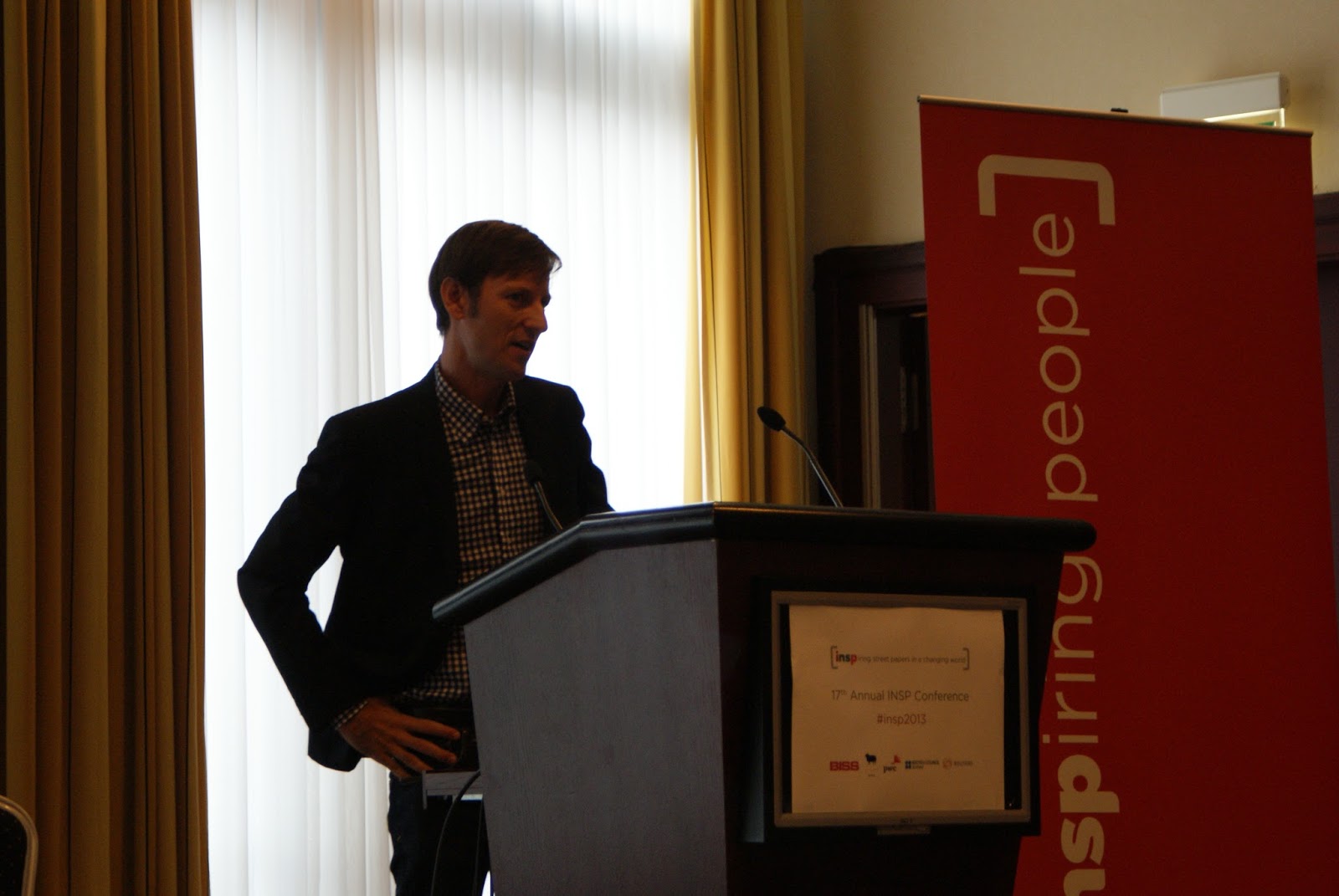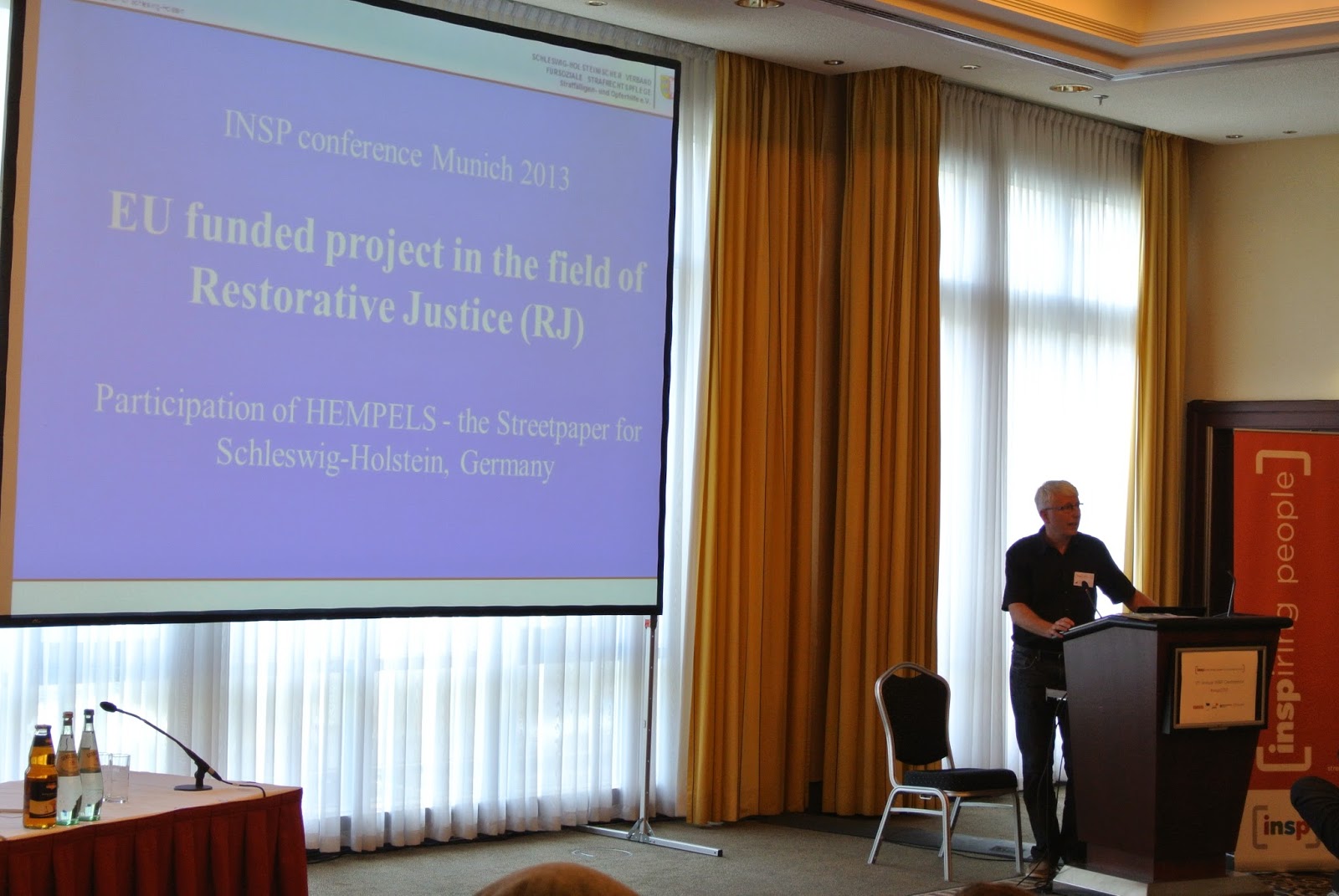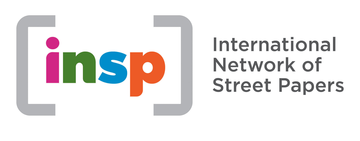Changes in technology, from smart phones to social media, have changed the way we consume media. Major print publications have experienced a significant decline in readership with more and more people turning to the internet for free news websites. Street papers face a unique problem with the transition from print to digital media because the vendor-customer transaction is core to the street paper model and must be retained.
The second day of the conference focused on the big digital question. Delegates were given the opportunity to share their own digital development ideas and discuss new and emerging challenges.
Executive Director of INSP, Lisa Maclean, introduced the theme of the day before external speaker Christoph Knorn, from award-winning international design and technology agency CONRAD CAINE, gave a talk about the shift in publishing from print to digital.
+042.jpg) |
Christoph Korn from the design and
technology agency CONRAD CAINE. |
Christoph showed delegates examples of the approaches mainstream media were taking with regards to digital output and discussed their relevance to street papers. He also explained the challenges and opportunities that digital media is bringing. According to him, "print is not dead, but shift happens". He said that there has always been a trend for convenience in media - just as buying music on iTunes is easier than getting a CD in the record store - and that street papers should be aware of this trend when developing new business models. The most important aspect for him: "Never let reality stop your imagination".
The second panel discussion then got under way. With the day’s theme in mind the question discussed by panellists was: “how do street papers survive in the digital age?”
+027.jpg) |
The panellists discussed the (digital)
future of street papers. |
Panellists Christian Lisseman (
The Big issue in the North, UK), Brittany Langmeyer (
StreetWise, USA), Dirk Meerkotter (
The Big Issue South Africa), Aaron Israelson (
Faktum, Sweden) and speaker Christoph Knorn discussed several street papers that were trialling different aspects of digital technology.
Among trials discussed by the panel – chaired by Sean Condon, Executive Director of
Megaphone (Cananda) and Co-Chair of INSP’s partner network, NASNA – was the INSP digital street paper pilot.
The pilot scheme involved customers being able to get a digital copy of
The Big Issue in the North (UK) for their smart phone by buying a QR code from vendors, maintaining the interaction between vendors and the public. Therefore, vendors will sell access to content rather than just pure content.
+047.jpg) |
| Sean Condon of Megaphone (Canada). |
The panel also answered questions from the floor about cashless payments, app technology and online subscriptions, such as
The Big Issue Australia’s Women’s Subscription Enterprise, which has allowed homeless women to gain safe employment while expanding the paper’s readership to more remote regions. Sean Condon of
Megaphone (Canada) also explained a very interesting feature which his paper implemented: the so-called vendor finder, which enables buyers to track down their nearest vendor online.
 |
| John Bird (The Big Issue UK). |
After discussion and feedback sessions about the day’s topic, John Bird, Founder of
The Big Issue UK, opened the innovation exchange. He made his aims very clear: "I don't want a person on the streets any longer than they have to be".
The innovation exchange saw street papers sharing brand new, innovative ideas to help generate extra income and awareness.
The Magazine
Street Roots (USA) for example, used Twitter to document 24 hours in the life of a homeless person, giving a first hand account of how it feels.
 |
| Jo Tein (Hempels, Germany). |
Asphalt, from Germany, introduced their bicycle garage program, where vendors learn to fix and maintain donated bikes. Some of the vendors even found jobs in bike shops after training at the workshop.
The Big Issue Australia shared their Women’s Subscription Enterprise.
Hempels (Germany) discussed their work with prisoners. Long term prisoners in the penal institution take part in writing workshops with finished articles then published in
Hempels, giving readers a unique insight into life both in and out of prison while also helping prisoners to learn new skills.
 |
| Dirk Meerkotter (The Big Issue South Africa). |
Amongst other innovations brought forward were the use of open software in the production of
The Big Issue South Africa. Dirk Meerkotter, the designer of the paper, turned to open source software for two reasons: "Not only can it improve our own work, but we can also improve the developer's work by giving them feedback".
 |
| Michael Vogel (Zeitschrift der Strasse). |
Furthermore, the German street paper
Zeitschrift der Strasse’s alternative business model was presented: The magazine focuses on provocative design, which challenges the reader to be more critical of their regular way of seeing things. For example, the top part of the magazine is inexplicably perforated, sparking questions in the reader and opening a conversation between vendor and buyer.
The Dutch papers
Z! and
Straatnieuws found a way to share resources and cut production costs by 25% with a joint collaboration. They were able to secure the existence of both papers with this new model and can now use their combined funds to focus on new projects, such as a national glossy street paper and a street paper designed for a younger audience.
While the street paper model faces a unique problem in the shift from print to digital there was no shortage of potential solutions on show.
+042.jpg)
+027.jpg)
+047.jpg)




